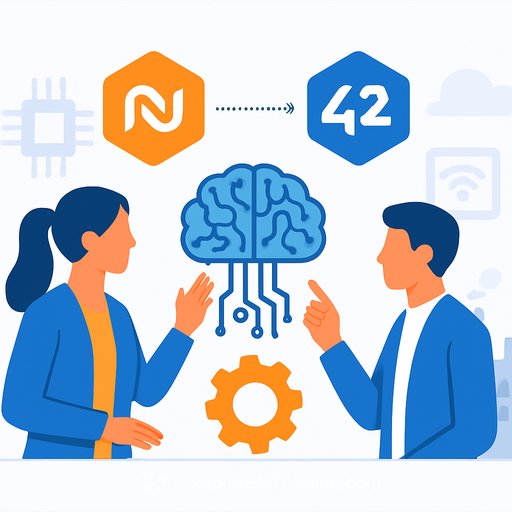Amplitude Launches AI Visibility: Product Teams Get Line-of-Sight Into Brand Presence in AI Search
San Francisco, CA - October 29, 2025. Amplitude (NASDAQ: AMPL) introduced AI Visibility, a feature that measures how brands show up inside AI assistants and conversational search. As AI search usage doubles year over year, standard SEO metrics can't explain why LLMs recommend one product over another. This release gives product and growth teams the missing telemetry.
Here's the shift: discovery now happens inside ChatGPT, Claude, and Google's AI Overviews. If your product isn't mentioned there, your funnel shrinks before it ever hits your site. AI Visibility closes that gap and ties it to conversions, retention, and revenue in Amplitude.
Why product teams should care
- AI assistants are a new surface where users make choices before they click.
- Your performance there affects signups, trials, and activation-regardless of traditional rankings.
- You can finally quantify AI-driven discovery and connect it to product outcomes you own.
What AI Visibility actually does
- Visibility Score: How often your brand appears across top LLMs and across intent-rich prompts.
- Traffic & ROI Tracking: Links AI mentions to sessions, conversions, retention, and revenue in Amplitude.
- Prompt & Source Analysis: Shows where you're absent, which sources LLMs cite, and what content gaps block inclusion.
- Competitive Rankings: Benchmarks presence and positioning vs. rivals.
- Actionable Recommendations: Page-level analysis, simulated changes, and content briefs to close gaps.
- Sentiment (upcoming): How LLMs portray your brand and how users react.
The edge: it sits on your behavioral data. That means you can see the full flow-from AI mention to signup, activation, and repeat usage-without bolting together tools.
AEO is here: from keywords to "Answer" presence
Amplitude's move formalizes AI Engine Optimization (AEO). The focus shifts from ranking for keywords to being the best answer for specific intents. Teams that adapt content, docs, and product proof quickly will win recommendation slots more often.
For context on AI Overviews in search, see Google's overview of the feature here.
How this changes product work
- Roadmap: Prioritize features and proof points that LLMs cite (security details, integrations, verified benchmarks).
- Docs as product: Treat docs, pricing pages, and FAQs as inventory LLMs mine. Keep them structured, current, and verifiable.
- Experimentation: Run page changes as A/B tests and track lift on AI-sourced cohorts, not just organic.
- Cross-functional loop: PM + Growth + Docs + Comms align on target prompts and evidence needed to earn mentions.
Practical workflow you can run this quarter
- Week 1: Instrument an "ai_source" dimension on inbound sessions. Stand up a baseline dashboard: mentions by model, conversions, and retention for AI-sourced users.
- Week 2: Build a prompt map across your key intents (problem, solution, category, competitor-comparison, implementation). Flag zero-mention gaps.
- Week 3: Ship 10-15 content fixes: schema updates, spec pages, integration docs, proof assets (case studies, benchmarks, SOC2, pricing clarity).
- Week 4: Launch 2-3 experiments that target high-intent prompts. Measure lift in Visibility Score, share-of-recommendation, and trial starts.
Metrics that should live on your team dashboard
- Visibility Score by intent (problem, solution, comparison, "best X for Y")
- Share-of-recommendation vs. top competitors
- Coverage across priority prompts and models
- CTR to site and trial from AI-sourced traffic
- Activation, time-to-first-value, and retention for AI-sourced cohorts
- Revenue and LTV attribution from AI mentions
- Content gap fix lead time (discovered → shipped)
Technical notes for implementation
- Attribution: Use UTM-like tagging for AI-sourced sessions where possible; enrich sessions in Amplitude with "ai_model", "ai_prompt_intent", and "ai_recommendation_rank."
- Content structure: Add structured data, cite credible sources, keep specs machine-readable, and use consistent product naming.
- Data governance: Guard against noisy prompts and flaky scraping. Validate sources and de-duplicate intent classes.
- Privacy: Treat AI-source data like any acquisition source. Follow your standard consent and data handling rules.
Market impact
- Enterprises: Portfolio brands (e.g., Alphabet (NASDAQ: GOOGL), Microsoft (NASDAQ: MSFT), Amazon (NASDAQ: AMZN)) can audit coverage across categories and regions, then feed changes to docs and product pages at scale.
- Existing Amplitude customers: Teams at Atlassian (NASDAQ: TEAM), NBCUniversal, and Under Armour (NYSE: UAA) can map AI mentions straight into their metrics without extra tools.
- Startups: The free, limited version lowers the bar to enter AEO and measure ROI against bigger players.
Risks and how to handle them
- Bias and manipulation: Optimize for evidence and clarity, not trickery. Track sentiment once available and flag skew.
- Pay-to-play pressure: Keep a clean separation between earned and paid placement in your reporting.
- Source opacity: Where models cite sources, use them. Where they don't, lean on controlled, verifiable content.
- Data quality: "Bad data, bad calls." Set alerts on source drift and broken citations.
What's next in the feature set
- Sentiment analysis: Read how LLMs portray your brand and how users react, then tie that to conversion and retention.
- Kraftful VoC integration: Blend qualitative feedback with behavioral data for a sharper read on what to fix first.
- AgenTeq agents (vision): Agents that run experiments, analyze usage, and push real-time campaign recommendations.
- Augmented analytics: Easier insights for non-technical teammates and context-aware recommendations.
Product playbook: make AEO part of product ops
- Adopt a monthly AEO review alongside your activation and retention reviews.
- Give a single owner (PM or PMM) the remit to maintain the prompt map and evidence backlog.
- Ship small, high-signal artifacts weekly: integration pages, implementation guides, pricing clarity, compliance proofs.
- Close the loop: measure effect on AI mentions and on product metrics, then iterate.
What to watch in the coming weeks
- Early case studies on conversion lift from AI-sourced cohorts
- Competitor responses inside analytics and SEO suites adding AEO features
- Ethics and transparency debates around AI recommendations and sponsored slots
Bottom line
AI assistants are now a front door to your product. Amplitude's AI Visibility gives product teams a clear way to see presence, fix gaps, and prove ROI. Treat AEO like a core motion in your product growth stack and tie it straight to activation, retention, and revenue.
Want structured ways to upskill your team on AI discovery and product analytics? Explore role-based learning paths here: Complete AI Training - Courses by Job.
Your membership also unlocks:






